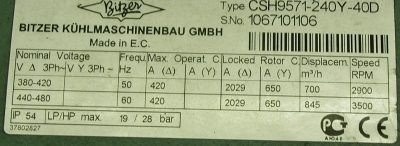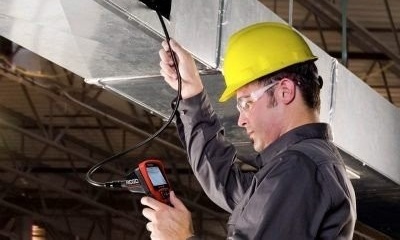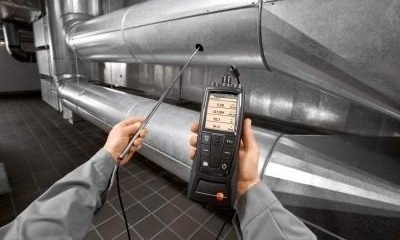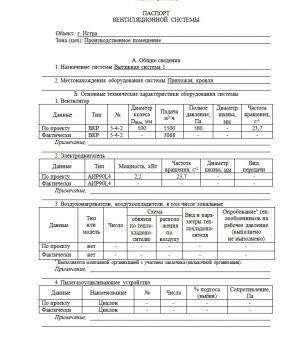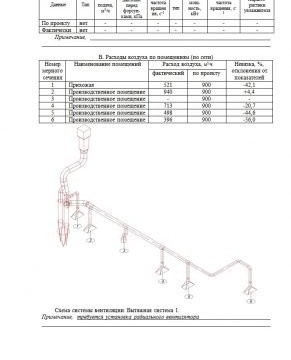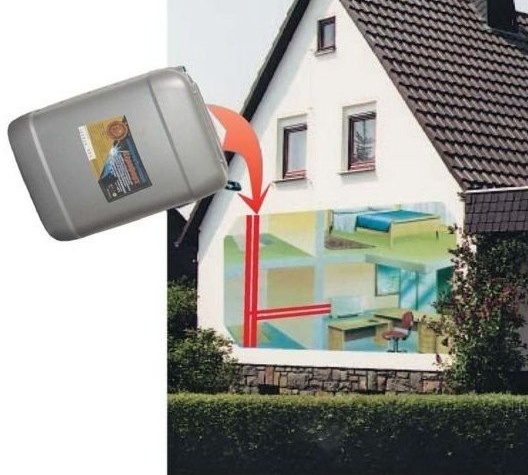Certification of ventilation systems
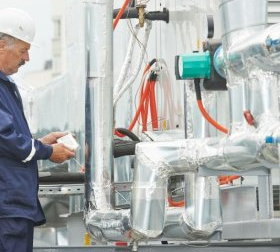
A passport for a ventilation or air conditioning system is a mandatory and basic document for the owner or builder of a building. It is not so important for the controlling body or inspection, although administrative penalties are provided for its absence, as for the organization that will operate the ventilation systems. The passport is a confirmation of a properly installed and adjusted ventilation system in accordance with not only the project documentation, but also with building codes. Certification does not present any difficulty for a specialist, it is only important to understand that it is mandatory, and it must be done in a timely manner.
Content
Certification of ventilation systems: definition and need
Certification is an obligatory measure for all systems and ventilation installations. Its result is a document called a passport of the ventilation system. Certification is carried out once during commissioning or immediately after it, the second time it is done only during reconstruction, modernization of the system or local replacement of equipment. Before putting a new or modernized system into operation, the passport must be issued and signed by all parties.
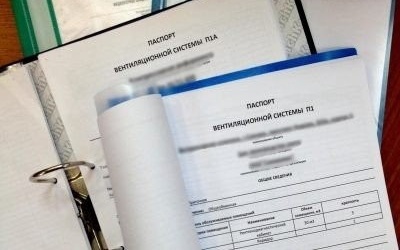
The passport for the ventilation system is a document of 10-15 sheets, fastened in a single brochure or stitched with a rope
The passport is necessary for the organization of the correct and effective operation of the system, for the convenience of its maintenance and repair. In addition, the presence of a passport is a mandatory requirement of regulatory authorities and inspections. The passport is the very first and main document of the ventilation system, which has no expiration date, all subsequent protocols and acts that support the proper operation of the entire system are attached to it.
Who performs the certification
Initial certification is often carried out by the installation organization, which performs installation and commissioning of the ventilation system, because the customer almost always prescribes this item in the technical task. The installation organization performs the work on its own or with the involvement of another specialized organization.
In the case when certification is carried out after the system is already in operation, the customer (operating organization) can contact a specialized company directly.
It should be noted that the passport of the ventilation system is not the only mandatory document. Each year, the system must undergo production control, which is often performed also with the help of specialized organizations.Therefore, if the customer does not have narrow specialists in ventilation, it is best to choose a stable and experienced contractor for the maintenance of the ventilation system and the preparation of all necessary documents at the stage of processing the first document.
The list of work performed during certification of the ventilation system
To draw up a passport for ventilation systems, they usually conduct visual inspections of equipment, measurements, certain tests, necessary calculations and compare the obtained values with the design values. The difference between the actual and design characteristics should not exceed certain values specified in the regulatory documentation.
- Visual inspection At this stage, as a rule, identify the types, models and serial numbers of installed equipment. This information is usually indicated on the plates available in each unit of equipment. Problems are often encountered when certification of a long-established and functioning system is carried out, because the plates can be lost during operation. If for some reason they are not available, this should be indicated in the passport under the table with the main technical characteristics of the equipment (line “Note”), even if the name of the equipment is revealed through measurements and calculations.
- Measurements. By measuring, the actual dimensions of the cross sections of the ducts, the diameters of the wheels and pulleys of the fans, electric motors, etc. are determined. To compile the actual diagram of the ventilation system, the geometric dimensions of the network, its upper and lower marks, the levels of the equipment relative to the clean floor, etc. are determined. measure air flow, noise level, pressure value at control points and other operating parameters of the system.
- Tests Aerodynamic tests of the ventilation system, the results of which are necessary for certification, are carried out in accordance with the requirements of GOST 12.3.018–79 “Occupational safety standards system (SSBT). Ventilation systems. Aerodynamic test methods. " To determine the necessary indicators I use manometers, anemometers, thermometers, tachometers and other equipment.
- Calculations and processing of results. The primary results of measurements and tests are used to calculate the indicators required for the passport. Calculations are carried out according to the normative methodological instructions of GOSTs and building norms and rules. The obtained values are entered in the passport and compared with the design values.
The quality of work must comply with existing norms and rules, since the results of certification are accepted and signed by the customer and the representative of the design organization. The customer and the designer have every right to be present at all stages of the tests and to verify the completeness and correctness of their conduct. In fact, a clear control of the certification process is a direct responsibility of both the customer and the designer.
Registration of the passport of the ventilation system
For each ventilation or air conditioning system, a passport is issued in duplicate in a certain form. The form is approved by SP 73.13330.2012 “Internal sanitary-technical systems of buildings”. The passport is filled in the following order:
- Indicate the name of the department or installation organization that carries out the certification.
- Indicate the full name of the object.
- In the line “Zone (workshop)” indicate the specific room where the system is mounted.
- Section "A" contains information about the purpose of the ventilation system (supply, supply and exhaust, air conditioning, etc.e.) and the location of the system equipment (floor, wing, orientation relative to the coordination axes of the building).
- Section "B" contains the numerical values of the characteristics that were indicated in the project documentation, and the actual characteristics of the installed equipment of the ventilation system. Actual data is taken from test reports. The passport must indicate:
- fan parameters (its type, serial number, diameter, flow, pressure, pulley diameter and speed);
- electric motor parameters (its type, power, speed, pulley diameter and gear);
- parameters of air heaters and air coolers (their type, number of equipment, strapping schemes, layout, type and parameters of the heat carrier, the presence or absence of testing heat exchangers for operating pressure);
- dust and gas capture device parameters (its name, serial number, number of devices, air consumption, percentage of leakage, resistance);
- characteristics of the air humidifier (type, water flow, pressure in front of the nozzles and the speed of the humidifier pump, type, power and speed of the electric motor of the humidifier, characteristics of the humidifier).
- In section "B" indicate the air flow in each room. The table lists all the rooms that the ventilation system covers, numbers of measured sections, design and actual air consumption in m3/ h and discrepancy, which is the percentage deviation of the actual values of air flow from the design.
- Three parties sign the passport of the ventilation system: the person in charge of the contractor or commissioning organization, the representative of the designer and the person in charge of the organization that carried out the certification.
At the end of each section there is a line “Note”, in which additional information is written, which can significantly affect the further operation of the system.
In addition to the main approved passport form, large operating organizations and enterprises can have their own passport forms for systems and installations, which contain a lot of additional information required for the correct and effective operation and ease of maintenance of specific equipment.
Cost of certification
- The cost of certification of a ventilation system or installation depends on the time of its implementation. If certification is carried out primarily by the organization that installs this system or installation, then the cost will be relatively small, because part of the necessary work will be carried out in parallel with the commissioning of the equipment.
- If the work is carried out by an organization that did not install the system, or if the system was operated for a long time at the time of certification, then the cost will be a little more.
- The cost of certification depends on the volume of work, since ventilation systems are small and large, with the same equipment and not the same type, complex and not so.
During the construction or reconstruction of a new facility, certification work is included in the estimate for installation and commissioning of the ventilation system.
Registration of a passport does not take much time, the main work is measurements and tests. Certification is best carried out in conjunction with commissioning, as during commissioning, all monitored parameters are measured and compared with the required and standard values. For the installation organization, certification does not represent any difficulties and is the final stage of installation.
